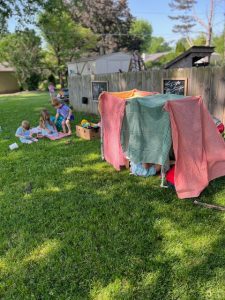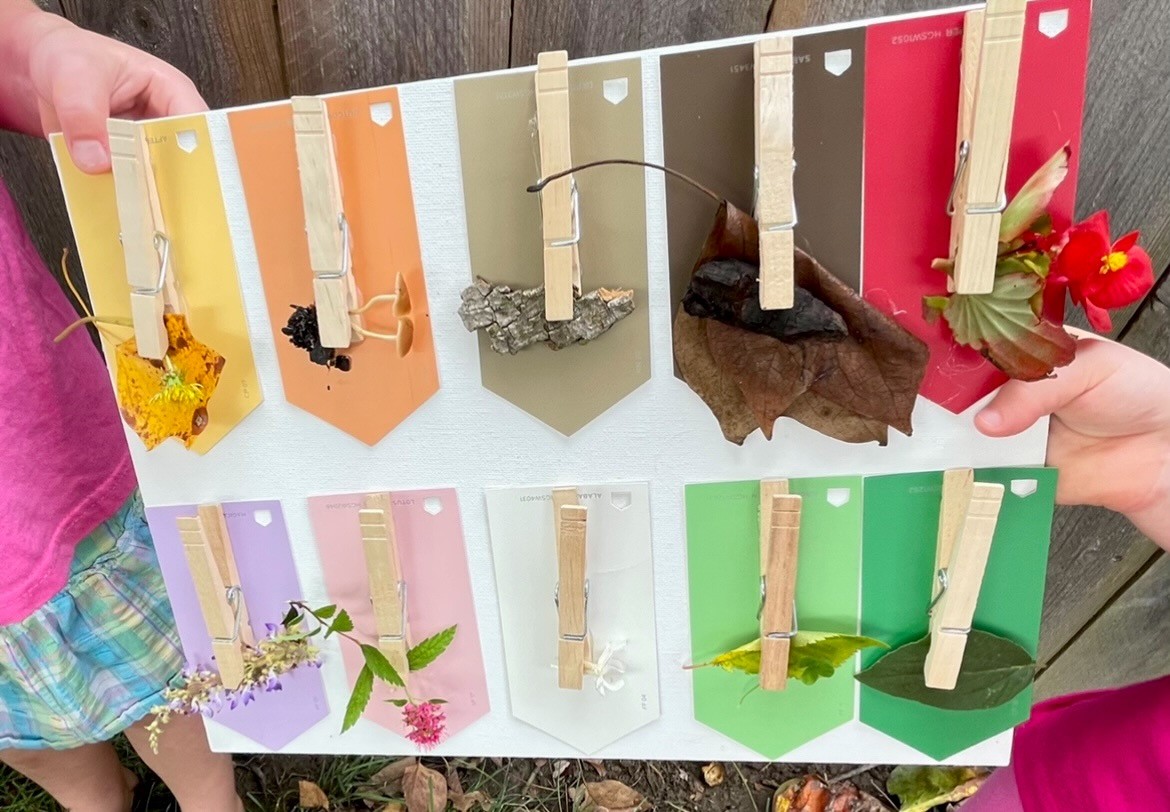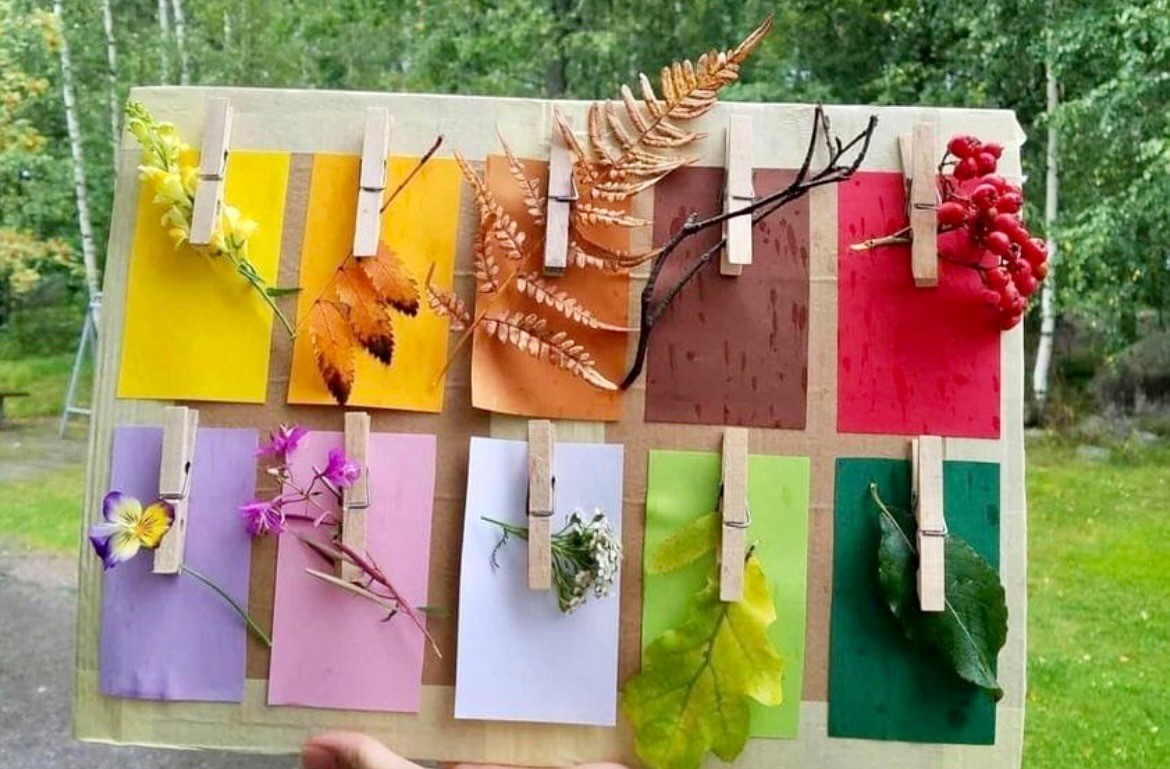A veces, si nos tomamos un momento para detenernos y mirar a nuestro alrededor (¡sí, es difícil hacerlo!)… realmente podemos ver lo que nos rodea. Podemos darnos cuenta de que muchas de las respuestas a las preguntas que nos hacemos ya están ahí para nosotros, esperando a ser descubiertas.
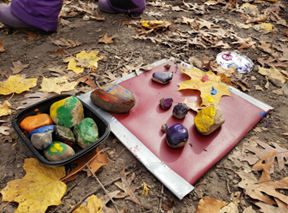 Como educadores y profesionales de la primera infancia, esta pausa puede ser a través del proceso de plantear una pregunta de una manera nueva nueva forma, buscando en buscando diferente resultado, viendo ver con una nueva comprensión. O puede ser un trampolín para algo que ya sabemos, pero que nos lleva en una dirección inexplorada.
Como educadores y profesionales de la primera infancia, esta pausa puede ser a través del proceso de plantear una pregunta de una manera nueva nueva forma, buscando en buscando diferente resultado, viendo ver con una nueva comprensión. O puede ser un trampolín para algo que ya sabemos, pero que nos lleva en una dirección inexplorada.
El viaje del aprendizaje al aire libre es así.
Para los que ya estáis en este camino, ya lo sabéis. A los que sientan curiosidad y quieran saber más, les invito a seguir leyendo.
Todo entorno exterior tiene algo que ofrecer. Algo que descubrir. Algo nuevo que puede enriquecer nuestras vidas. Puede transformar la forma en que los niños interactúan con el mundo. Nuestro mundo. Su mundo.
La investigación es abundante y clara en cuanto a los muchos beneficios del aprendizaje de los niños al aire libre y del juego en la naturaleza.
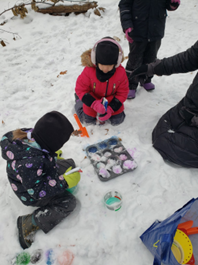 Así pues, tanto si dispones de mucho como de poco tiempo al aire libre en tu centro, tanto si tienes una zona boscosa, un campo, un terreno abierto o un pequeño espacio o incluso sólo unos pocos árboles en los que explorar, el aprendizaje de la naturaleza PUEDE tener lugar. Pero insisto en que se explore con esa mentalidad curiosa. Si estás pensando en todas las barreras que pueden impedirte poner en práctica experiencias al aire libre para tus hijos, no estás solo.¡Pero esto es tan nuevo, tan diferente! ¡Tengo tanto incorporado a lo que ya sé y hago! ¡Esto es demasiado trabajo! Cambiar ES difícil, pero a medida que sigas leyendo para conocer herramientas e ideas prácticas para integrar más naturaleza en tu día a día, descubrirás que no sólo es factible, sino que está lleno de regalos inesperados. Cómo empezar a enseñar en el exterior de Get toGreen a través de las escuelas del condado de Fairfax proporciona consejos sencillos.
Así pues, tanto si dispones de mucho como de poco tiempo al aire libre en tu centro, tanto si tienes una zona boscosa, un campo, un terreno abierto o un pequeño espacio o incluso sólo unos pocos árboles en los que explorar, el aprendizaje de la naturaleza PUEDE tener lugar. Pero insisto en que se explore con esa mentalidad curiosa. Si estás pensando en todas las barreras que pueden impedirte poner en práctica experiencias al aire libre para tus hijos, no estás solo.¡Pero esto es tan nuevo, tan diferente! ¡Tengo tanto incorporado a lo que ya sé y hago! ¡Esto es demasiado trabajo! Cambiar ES difícil, pero a medida que sigas leyendo para conocer herramientas e ideas prácticas para integrar más naturaleza en tu día a día, descubrirás que no sólo es factible, sino que está lleno de regalos inesperados. Cómo empezar a enseñar en el exterior de Get toGreen a través de las escuelas del condado de Fairfax proporciona consejos sencillos.
La Asociación Norteamericana de Educación Ambiental (naaee) ofrece tres categorías para planificar y organizar experiencias de aprendizaje al aire libre: ENSEÑANZA, SEGURIDAD y MEDIO AMBIENTE.
Cuando pasamos tiempo al aire libre con los niños, podemos aprender tanto del espacio como del lugar. Aprender al aire libre (¡simplemente estando al aire libre!) también es un beneficio independiente para el desarrollo integral del niño… simplemente ser al aire libre es bueno para los niños y las escuelas.
- ¿Qué enseño?Comienzo Natural: La Enseñanza y Tinkergarten: Ideas para aprender al aire libre en Tinkergarten
- ¡Parece tan arriesgado! Inicio Natural: La seguridad
- ¿Dónde? Inicio Natural: El Medio Ambiente
Consejos prácticos para la ropa y la merienda:
A veces lo mejor es empezar poco a poco. Una nueva rutina de paseo por la naturaleza con indicaciones como “Cuéntame más sobre lo que notas” y “¿Puedes decir más sobre eso?”. O integrar un enfoque matemático como “Exploradores de la naturaleza, hoy vamos a fijarnos en la naturaleza que nos rodea en grupos de tres” puede ser uno de los cambios más importantes que hagas este año.
A veces, lo mejor es replantearse una rutina que suele hacerse en el interior y/o sobre una pantalla y sacarla al exterior. Las lecturas en voz alta, los diarios y las canciones pueden hacerse ahora sobre colchonetas de gomaespuma o una lona. Unos minutos extra enseñando y practicando rutinas de aprendizaje al aire libre merecen la pena.
A veces, lo mejor es planificar con tu equipo docente y hacer vuestras propias búsquedas del tesoro en la naturaleza para adultos, y examinar las zonas para un juego seguro y creativo.
La naturaleza es alegre. La naturaleza es poderosa. La naturaleza es una maestra increíble. Te invito a dar los pequeños pasos o los saltos de gigante necesarios para proporcionar a nuestros hijos experiencias al aire libre de importancia crítica. Trabajando como profesora y entrenadora en innumerables espacios y lugares durante más de veinte años, puedo afirmar con certeza que lo que la naturaleza nos regala como maestra es incomparable.
Así que, baja el ritmo, mira a tu alrededor y hazte esas preguntas que la naturaleza ha estado esperando que nos hagamos.
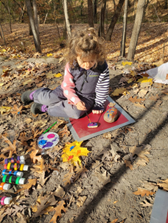 “Si realmente queremos que la educación basada en la naturaleza sea significativa y accesible para todos los niños y familias, debemos esforzarnos por enfocar la educación en el contexto no sólo de la clase, o del bosque, sino del lugar, de todo este mundo extraordinario del que todos formamos parte.” – Kit Harrington
“Si realmente queremos que la educación basada en la naturaleza sea significativa y accesible para todos los niños y familias, debemos esforzarnos por enfocar la educación en el contexto no sólo de la clase, o del bosque, sino del lugar, de todo este mundo extraordinario del que todos formamos parte.” – Kit Harrington
Fort building is an activity most children enjoy– who wouldn’t love the opportunity to be the architect of their own space? It’s also an incredible way to promote children’s creativity, imagination, persistence, and STEAM skills.
Why is this a STEAM activity?
Science: children need to navigate the physical properties of a variety of materials to make their fort. Will the fabric keep its shape when draped over sticks, or will it fold in ways the children didn’t anticipate? Will rubber bands be strong enough to hold the sticks together, or will they need to use yarn or glue?
Technology: Older children can use rulers, measuring tape, levels, and more tools to help them plan and execute their forts.
Engineering: Structural engineers need to take into account the materials they’re working with when designing structures for an intended purpose. These young engineers will learn the foundational problem-solving skills when the plan and test their designs.
Art: A sense of aesthetics is crucial in fort design! Children can select their color scheme and decor as they assemble.
Math: Geometry is key here, as children figure out how large a space they need to fit the people they would like inside, and measure their sticks and cloth accordingly.
Building outdoor fabric forts promotes play can help children develop problem-solving skills that will help them later in life. Fabric forts don’t always work out the way kids want them to! They teach children to find new and better ways to achieve the result they want.
How can you get started? Depending on the ages of the children involved, this activity may use: blankets, tablecloths, sticks, lengths of PVC pipe, yarn, glue, paper, rubber bands, and all kinds of other “stuff” that you have on hand!
Creating a nature scavenger color-hunt game is a fun nature-themed activity to get your group outdoors. This is an activity that, no matter their age, they will stay busy and observe as they play creatively and explore outside.
You can use a canvas panel or a piece of cardboard, I would say roughly the size of a medium-large pizza box. You then want to take 10 color paint swatches. I like to take a walk in my space and quickly take 10 pictures to match when I get to my hardware store. This is something that will, of course, change with the seasons.
We did 10 colors; my group is 2.5-4 years old. It’s entirely up to you how you choose to do this; you can cut smaller pieces of cardboard and give each child 5 colors; you can do it as a group as we did. You can add shapes by cutting the paint sample into a circle or triangle. You can also use this as a take-home activity for family engagement. Ask families to bring it back and discuss it with the group.
So after you have the canvas panel or cardboard, the color swatches, and 10 clothespins, you want to hot glue the colors swatches down and the clothespins. Then go explore for colors!
You can set rules for the game, like the color green can not be grass. Once the child finds the color, they yell “I found yellow”, clip it, and attach it to the board. We display our board and showcase it for pick up. Children are always so proud to name what they found and the color it matches.

